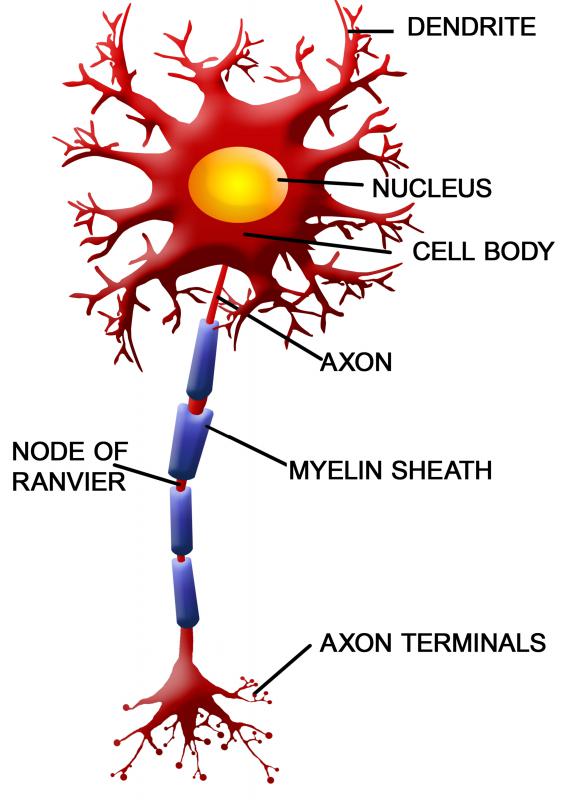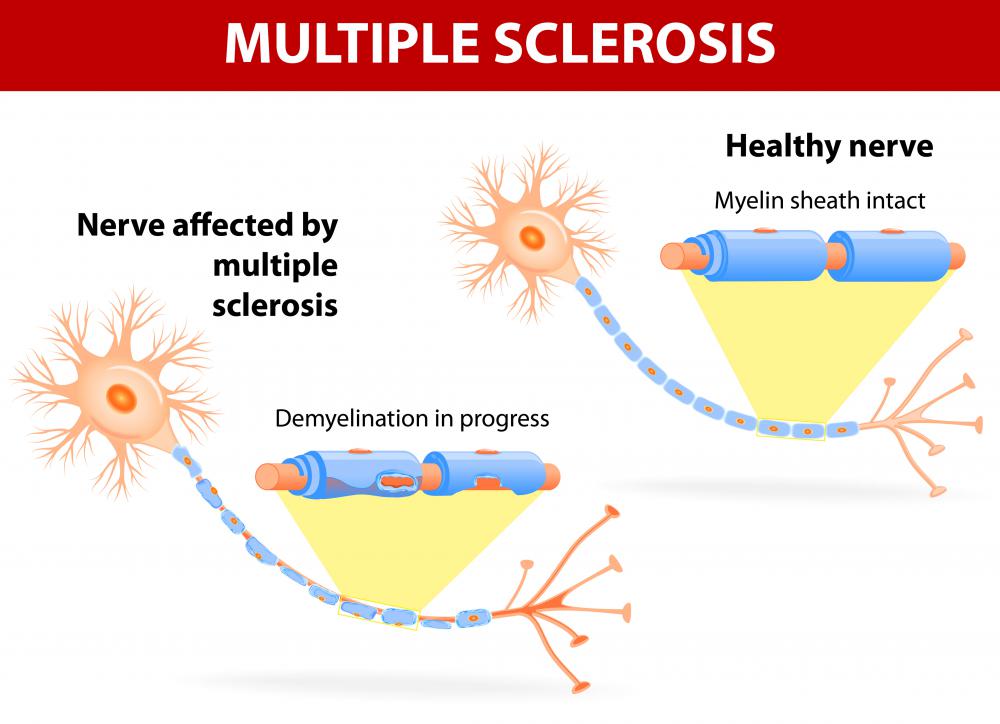At TheHealthBoard, we're committed to delivering accurate, trustworthy information. Our expert-authored content is rigorously fact-checked and sourced from credible authorities. Discover how we uphold the highest standards in providing you with reliable knowledge.
What Is the Function of Myelin?
Neurons in the central and peripheral nervous system send signals to different areas of the brain and body, changing behavioral responses and physiological processes. These electrochemical signals are sent down the axon, a long, thin, cylinder-like structure of a neuron that is connected to its cell body, or soma. Surrounding the axon is an insulating material called myelin. The function of myelin is to protect the axon by forming a myelin sheath and by ensuring that signals are sent rapidly and efficiently.
Made up of protein and fat, myelin is a substance that is produced by cells that wrap around segments of the axon. While some parts of the axon become encased, or myelinated, other areas are left unwrapped, or unmyelinated, depending on which cell is producing the myelin. The primary function of myelin sheaths are to protect the axon and assist with axonal firing by preventing messages from interfering with each other. Appearing below the cerebral cortex, the white matter has a whitish appearance due to the myelin sheaths.

Cells that produce myelin are called glial cells. There are two different categories of glial cells, called macroglial and microglial. While there are several cells that fall into the macroglial category, the two cells that are involved in the production and function of myelin sheaths are called oligodendrocytes and Schwann cells.
In the central nervous system, oligodendrocytes form myelin sheaths around axons, while Schwann cells assist in the production of myelin sheaths around axons in the peripheral nervous system. Both oligodendrocytes and Schwann cells form myelin sheaths by wrapping around the axon; however, Schwann cells only wrap around segments of the axon, leaving small gaps in between called nodes of Ranvier. Unlike Schwann cells, myelination by oligodendrocytes extends to more than just one axon, and a single oligodendrocyte can contribute to myelinating several adjacent axons.

The function of myelin is very important, and this is most evident in patients suffering from the neurological disorder multiple sclerosis. Multiple sclerosis is a disorder that arises when an individual's immune system attacks the myelin sheaths surrounding axons in the central nervous system, deteriorating them. Under clinical examination, these areas appear hardened and damaged. As a result, patients with this neurological disorder suffer from numerous impairments that affect both motor and sensory functions.
AS FEATURED ON:
AS FEATURED ON:













Discussion Comments
Post your comments